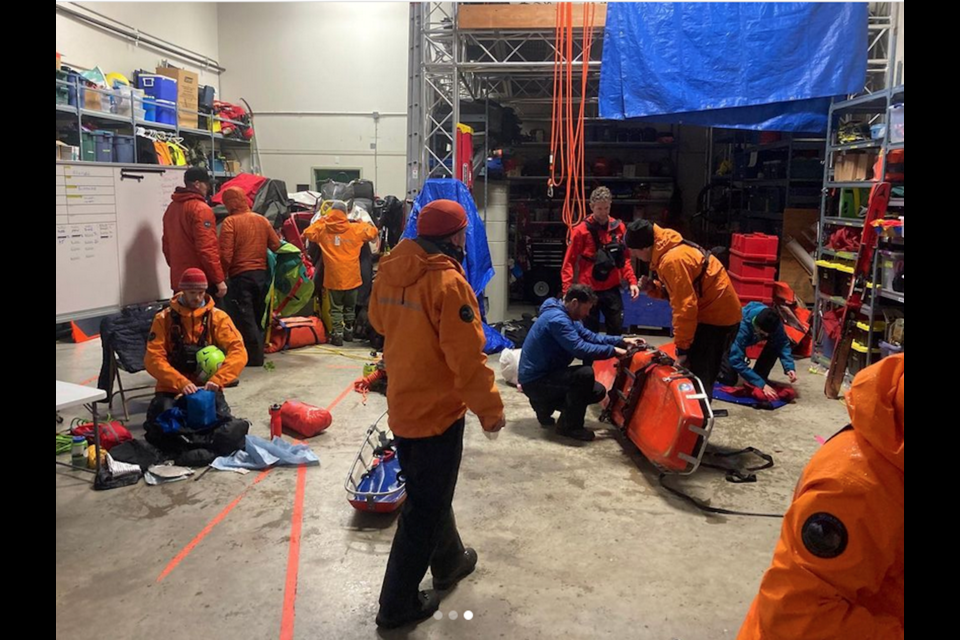Colder weather has prompted Squamish Search and Rescue to shift into winter operations, rescuing snowmobilers involved in accidents and vehicles caught in the recent snowstorm.
As of Dec. 21, recent incidents have catapulted the organizations’ callouts to 151 for the year, far surpassing last year’s record.
“I think we forecasted around 150 calls, so it’s not something that is completely surprising, but it certainly is a record-breaking year, not just for Squamish SAR, but from what I’ve seen, every SAR team in the province,” said rescue manager B.J. Chute.
He said it’s unclear exactly why, but more people are recreating in the backcountry, prompting more calls.
This once again highlights the importance of being prepared, especially as the weather has become more unforgiving, he said.
On Dec. 18, rescuers responded to two calls for stranded vehicles.
The first was in the Squamish Valley.
Chute said four people were caught in the storm and slid off the road.
“We were able to drive as far as we could and ski some supplies into them,” said Chute.
“With the supplies that we left, and what they had, they were able to shelter in their vehicle overnight, and our team came out, and, the next day, we were able to fly up and extract them via heli uninjured.”
Later that evening, a call came in for a vehicle stranded on the Indian Arm Forest Service Road, but the time of day and avalanche concerns delayed a SAR response.
However, Chute said, that person was able to self-rescue during the night.
On Dec. 19, crews were alerted by off-duty paramedics snowmobiling on Brohm Ridge to an injured person sheltering in the Brohm Ridge snowmobile cabin.
The male rider had fallen and dislocated his shoulder.
However, as SAR was preparing to fly out to reach the injured person, sledders in the area wound up bringing that person to safety. As a result, the callout was cancelled.
On Dec. 20, a man had a snowmobile accident on Alpen Mountain.
People who happened to be in the area stabilized the injured person.
They then found a potential landing site and used their snowmobiles to compress the snow into a suitable area for a helicopter.
Finally, they also used their vehicles’ sleds to break a trail down to the subject, making him accessible to rescuers.
“We were able to fly in and land nearby and extricate this person back to Squamish airport where he was handed over to B.C. ambulance paramedics,” said Chute.
“In all the cases, the people did the right thing. They had supplies with them. They were able to either self-rescue or stay out until rescue was available. And I think that is something that’s key to highlight — is that given not just the avalanche conditions, but the early onset of darkness and weather, there are factors outside of search and rescue control that could, and oftentimes, this time of year, hamper our ability to respond.”
AdventureSmart has tips to help folks prepare.






